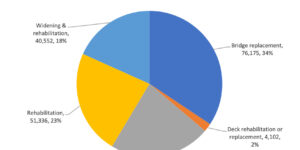Hackers likely working for a nation-state recently invaded the safety system of a critical infrastructure facility in a watershed attack that halted plant operations, according to cyber investigators and the firm whose software was targeted.
FireEye Inc disclosed the incident on Thursday, saying it targeted Triconex industrial safety technology from Schneider Electric SE.
Schneider confirmed that the incident had occurred and that it had issued a security alert to users of Triconex, which cyber experts said is widely used in the energy industry, including at nuclear facilities, and oil and gas plants.
FireEye and Schneider declined to identify the victim, industry or location of the attack. Cyber-security company Dragos said the hackers targeted an organization in the Middle East, while a second firm, CyberX, said it believe the victim was in Saudi Arabia.
It marks the first report of a safety system breach at an industrial plant by hackers, who have in recent years placed increasing attention on breaking into utilities, factories and other types of critical infrastructure, cyber experts said.
Compromising a safety system could let hackers shut them down in advance of attacking other parts of an industrial plant, potentially preventing operators from identifying and halting destructive attacks, they said.
Safety systems “could be fooled to indicate that everything is okay,” even as hackers damage a plant, said Galina Antova, co-founder of cyber-security firm Claroty.
“This is a watershed,” said Sergio Caltagirone, head of threat intelligence with Dragos. “Others will eventually catch up and try to copy this kind of attack.”
In the incident, hackers used sophisticated malware to take remote control of a workstation running a Schneider Electric Triconex safety shutdown system, then sought to reprogram controllers used to identify safety issues. Some controllers entered a fail safe mode, which caused related processes to shut down and caused the plant to identify the attack, FireEye said.
FireEye believes the attacker’s actions inadvertently caused the shutdown while probing the system to learn how it worked, said Dan Scali, who led FireEye’s investigation.
The attackers were likely conducting reconnaissance to learn how they could modify safety systems so they would not operate in the event that the hackers intended to launch an attack that disrupted or damaged the plant, he said.
Public Warnings
The U.S. government and private cyber-security firms have issued public warnings over the past few years about attempts by hackers from nations including Iran, North Korea and Russia and others to attack companies that run critical infrastructure plants in what they say are primarily reconnaissance operations.
CyberX Vice President Phil Neray said his firm found evidence that the malware was deployed in Saudi Arabia, which could suggest that Iran may be behind the attack.
Security researchers widely believe that Iran was responsible for a series of attacks on Saudi Arabian networks in 2012 and 2017 using a virus known as Shamoon.
Schneider provided Reuters with a customer security alert, dated Wednesday, which said it was working with the U.S. Department of Homeland Security to investigate the attack.
“While evidence suggests this was an isolated incident and not due to a vulnerability in the Triconex system or its program code, we continue to investigate whether there are additional attack vectors,” the alert said.
Department of Homeland Security spokesman Scott McConnell said the agency was looking into the matter “to assess the potential impact on critical infrastructure.”
The malware, which FireEye has dubbed Triton, is only the third type of computer virus discovered to date that is capable of disrupting industrial processes.
The first, Stuxnet, was discovered in 2010 and is widely believed by security researchers to have been used by the United States and Israel to attack Iran’s nuclear program.
The second, known as Crash Override or Industroyer, was discovered last year by researchers who said it was likely used in a December 2016 attack that cut power in Ukraine.





















 Retail Workers Consider Quitting Due to Safety Concerns Ahead of Holiday Shopping Season
Retail Workers Consider Quitting Due to Safety Concerns Ahead of Holiday Shopping Season  Cyber Crime Climbs, 90% of Americans Have Been Targeted
Cyber Crime Climbs, 90% of Americans Have Been Targeted  Allstate Insurers Sue Hyundai, Kia to Pay for Claims From Defective Cars
Allstate Insurers Sue Hyundai, Kia to Pay for Claims From Defective Cars  Allstate Thinks Outside the Cubicle With Flexible Workspaces
Allstate Thinks Outside the Cubicle With Flexible Workspaces 











